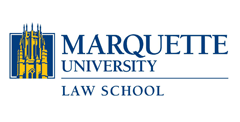Abstract
The medical diagnostics market is expected to reach 65 billion by 2018. In March 2012, in Mayo Collborative Services v. Prometheus Labs, Inc. , ("Mayo") the U.S. Supreme held that the Mayo Clinic (the "Clinic") had not infringed on Prometheus Labs’ (“Prometheus”) diagnostic patent because the Prometheus patent involved ineligible subject matter, and was therefore invalid. Section 101 of the Patent Act defines eligible subject matter an “any new and useful process, machine, manufacture, or composition of matter” as patentable subject matter. Courts have held that Section 101 contains an implicit exception, making laws of nature, natural phenomena, and abstract ideas ineligible for patent protection. Traditionally, applications to structure or process have satisfied this exception.
However, since the Court’s unanimous decision in Mayo, the percentage of medical diagnostic patents allowed by the U.S. Patent & Trademark Office (the “USPTO”) has dropped to less than thirty-fice percent, as compared to eighty-five percent before Mayo. Mayo and its progeny arguably had a significant impact on the multi-billion-dollar medical diagnostic industry—an industry focused on the laws of nature that occur within the human body. After Mayo, ,edical diagnostic develpoers have encountered less certainty for both issuance and in mounting a vigorous defense of infringement.
Although the topic of patentability has been avidly discussed in legal literature critiquing the Court’s Mayo rationale, this article will analyze possible solutions to increase patentability, and the defense of medical diagnostic patents. Specifically, this article will examine: (1) how the Prometheus patent could have been altered during patent prosecution; (2) how these changes are affected by a challenge of invalidity elucidated through Mayo and its progeny; and (3) whether the Patent Trial and Appeal Board (the “PTAB”) or subsequent Federal Circuit decisions have clarified the patentability of medical diagnostic patents. Finally, this article will draw conclusions regarding strategies to increase patentability in medical diagnostic patens and reduce the likelihood that the patent will be pronounced “Dead on Arrival” (DOA) in district court.
Repository Citation
Karen McKenzie,
NOA v. DOA: Increasing Medical Diagnostic Patentability After Mayo,
22 Marq. Intellectual Property L. Rev. 193
(2018).
Available at: https://scholarship.law.marquette.edu/iplr/vol22/iss2/4
Included in
Health Law and Policy Commons, Intellectual Property Law Commons, Medical Jurisprudence Commons, Science and Technology Law Commons
